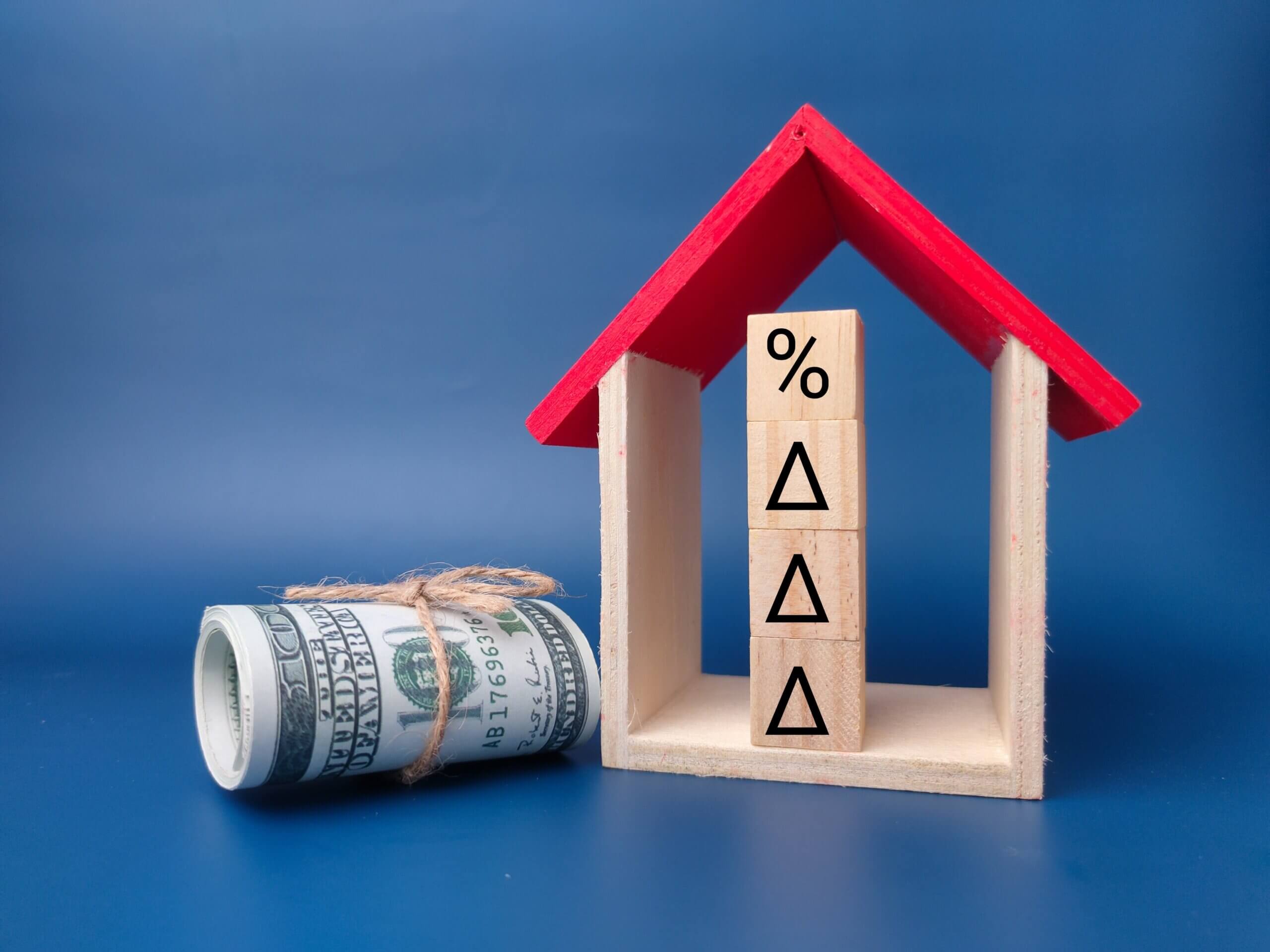Written By:
 Scott Glatstian
Scott GlatstianYour Dedicated & Trusted Legal Team
3 Generations & 100+ Years of Combined Legal Experience

Homeownership is one of the largest investments a person will make and, for some people, crossing that milestone is a great feeling. As awesome as homeownership is, it’s also a big responsibility. More than in the recent past, Americans are experiencing the weight of that responsibility in their mortgage payments. That’s because home prices in 2022 rose by 10.2% and the trend is expected to continue in 2023. According to CNBC, home prices are 43% higher than they were in 2019.
Over the past few years, inflation has impacted Americans in many sectors of society, especially in the mortgage sector. Most people seeking to become homeowners take out mortgages to buy a property. Due to inflation, however, the average interest rate has risen. In 2023, the mortgage rate for a 30-year fixed loan is 7.05% and for a 15-year fixed rate, it is 6.22%. These rates have doubled since 2022 when the interest rate for a 30-year fixed rate was 3.22% and for a 15-year fixed rate, it was 2.43%.
The higher the interest rate the more a person will have to pay in the mortgage.
Let’s consider this example:
The year is 2022, and Mary and Brad decide to buy a home for $392,000. They put a down payment of 10%, which would be $39,200. They decide upon a 30-year fixed rate loan at 3.22% making Mary and Brad’s monthly mortgage payment $2,769.
Now, let’s say Mary and Brad waited a year to buy a house in 2023. Again, they purchase a home for $392,000 with the same down payment of 10% which is $39,200 and go with the same 30-year loan. Unfortunately, the interest rate has increased to 7.05%. This means Mary and Brad’s monthly rate would be $3,596. That’s $827 more that they’ll have to pay each month.
Given current home prices and interest rates, it’s not surprising that, for some, keeping up with the mortgage payments is challenging. One way to address the financial squeeze is to turn to a loan modification to help. This tool gives homeowners a chance to make their mortgage payments more affordable again, but it’s best to understand how this process works. That way one can benefit from it when it’s needed most.
What Is Loan Modification?
A loan modification can be done to any type of loan, however, it’s most common with secured loans such as mortgages. When a loan modification happens it changes the original terms of the mortgage loan. That can include extending the repayment length time, reducing the interest rates of the loan, or doing a different type of loan. It can also be a combination of all these options.
Loan modifications are for people who are unable to keep up with their payments under their original loan. This agreement can only happen through the current lender, but the lender isn’t obligated to agree to a loan modification. Although a lender isn’t obligated to offer a loan modification, they will likely try to work the situation out with the borrower. The reason is simple. Foreclosure due to loan defaults will result in losses for them – on their books — which they don’t want.
If pursuing a loan modification, it’s important to build a strong case detailing why you need the help. Speaking with an experienced attorney is a great way to develop a plan of action and a persuasive argument to present to the lender.
How to Build a Case for Loan Modification
Loan modification isn’t a one-size-fits-all process, as every loan provider is different and every person’s situation is not the same. So, it’s always good to check with one’s own provider. However, there are some general guidelines to follow to help secure the modification.
Provide Proof of Income: It’s good to have this information on hand. Provide documentation from your employer of your salary or hourly wage. If you happen to be a contractor or self-employed, it’s recommended to have profit and loss figures. Proof of this type will show the lender that your monthly income isn’t enough to cover your expenses and mortgage.
Bank Statements and Tax Returns: This might be required depending on the lender. This documentation will help to determine available assets. Such information will give them the big picture of your overall finances.
Hardship Statements: This is a chance for you to explain the situation that is impacting your financial state. In this letter, a person is able to elaborate on specific details that are making it hard to pay the mortgage. A person can talk about termination from a job or unexpected medical bills that may have come up. Along with this statement and the documentation that you’ve compiled, one may be able to provide a strong case for a loan modification.
An attorney can help you to prepare this information in a way that is persuasive to the lender(s) involved.
What Are the Benefits of Loan Modification?
The benefits of the loan modification are great for homeowners seeking assistance. If a loan modification is successful, mortgage payments will become manageable again. This means a homeowner won’t have to worry about foreclosure due to non-payment. There are a few specific potential outcomes worth discussing.
Loan Extending: A good option is extending the loan term. This affords a longer time to repay the mortgage loan. A typical mortgage loan is around 30 years, however, if a modification happens, it can extend out to 40 years. This makes the monthly mortgage bill lower. If a person is behind, they may be able to add those overdue payments to the modification as well. People can extend the length of their loans regardless of what year they are in for their mortgage. The extension will depend on the terms of the loan modification that was agreed upon.
An example in Forbes explains the lengthening of a loan term. If one has a $100,000 mortgage at an interest rate of 4% with 15 years left, they would pay $740 monthly. If the loan is extended by 10 years, the monthly payment drops to $528.
Interest Rate Reduction: It’s possible to lower interest rates on a loan modification. If the interest rates are lower now than when the loan was originally obtained, a person could benefit from a lower interest rate through modification. However, this depends on the interest rates that are current at the time people are applying for a modification. High interest rates can pose a problem for homeowners applying for a loan modification. This option would likely not help an individual today because interest rates are higher than in prior years. However, if the loan was secured at a time when interest rates were even higher than they are now, then this may be a viable solution.
Principal Forbearance: This option is usually the last choice for a lender in the loan modification process. If other alternatives aren’t able to help a homeowner, then principal forbearance could help to avoid foreclosure. A principal forbearance takes a portion of your unpaid debt and adds it to the end of the loan. This will help reduce payments in the present and allow people to get into a better financial situation.
Types of Loan Modifications
Loan modifications can offer options. Anyone considering loan modification should speak with an attorney to determine the best fit for their circumstances.
Flex Modification: This is a conventional loan modification program for people to access. An eligible person must have faced financial hardships and have a stable income to support monthly payments. The individual also must have taken out a mortgage loan 12 months before being evaluated for the program. When someone qualifies, they will be able to have the loan term extended to 40 years and the principal and interest payment reduced by up to 20%.
FHA Loan Modification: This choice provides additional options to help homeowners. There are several to choose from within this program. Some eligibility requirements include: your first mortgage must be an FHA-insured home loan and you must have had your mortgage for at least 12 months. A person could extend the loan for up to 40 years. They also have the option to get a lower interest rate and cut the monthly mortgage by at least 25%.
VA Loan Modification: This loan allows veterans to take missed payments and roll them back into the balance. From there, they can work with the lender to create a more manageable repayment plan, including extending the loan.
USDA Loan Modification: If a borrower has a loan that is backed by the U.S. Department of Agriculture, then this is the choice for them. To qualify, a person must have a Section 502 Single Family Housing Guaranteed Loan. This modification option can extend the term of the loan to 40 years. It can reduce the interest rate and a person can receive a “mortgage recovery advance,” which is a one-time payment to help bring the loan up to date.
How We Can Help
Homeownership is a lot of responsibility and dealing with possibly losing it is stressful. While loan modification is a great tool to bring relief from the situation, it is a complex process. Seeking legal help is a great idea because an attorney can pinpoint the best option(s) and build a strong case for loan modification. At Rosenblum Law, our attorneys have years of experience they will apply to assist you through the process. Don’t hesitate to contact us to arrange a free consultation today.

 Scott Glatstian
Scott GlatstianAbout The Author
Scott Of Counsel for Rosenblum Law. He is a graduate of Syracuse University College of Law and received his undergraduate degree from Rutgers University.
Read MoreLatest from Our Blog



Editorial Standards
Rosenblum Law is committed to delivering informative content of the highest quality. All content is subject to our rigorous editorial standards for relevance, accuracy, sourcing, and objectivity. Everything is fact-checked by an editor and reviewed for legal soundness by one of our practicing attorneys prior to being published.
How to Cite Rosenblum Law’s Article
APA
Scott Glatstian (Oct 13, 2022). 4 Bad Reasons to Delay Filing for Bankruptcy. Rosenblum Law Firm, https://rosenblumlaw.com/bad-reasons-to-delay-bankruptcy/
MLA
Scott Glatstian "4 Bad Reasons to Delay Filing for Bankruptcy". Rosenblum Law Firm, Oct 13, 2022. https://rosenblumlaw.com/bad-reasons-to-delay-bankruptcy/
